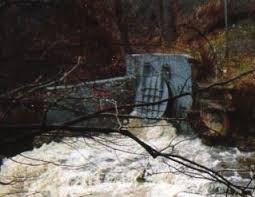Sorry to have to break this to you, but sewage overflows are a thing. Plug your nose, then listen up:

Photographic evidence that sewers can overflow, big-time, in a storm. (via EPA)
Here’s the raw deal: Many communities have combined sewer systems (CSS) that can overflow during rainstorms—sending raw sewage into rivers and lakes. Not a pretty picture.
“A lot of these older cities like Chicago, and like Detroit– a lot of the east coast cities have stormwater that feeds into the same sewer system that takes your sewage from your toilet or sink,” explains Shawn McElmurry, PhD, an associate professor at Wayne State University.
He says when everything’s working the way it was meant to, all the water is sent to a treatment facility.
But growing populations are putting more wastewater through pipes at the same time that heavy rain is falling more often—together overwhelming the system and sending untreated sewage into waterways.
Experts say many cities will have to redesign—not just upgrade—their aging systems to handle the overflow.
Get schooled:
- Learn about Combined Sewer Overflow (CSO) control policy
- Read up on the environmental impact of CSOs, with info from the Alliance for the Great Lakes
The fine print:
- This segment was produced in partnership with Cornell’s Atkinson Center for a Sustainable Future.




